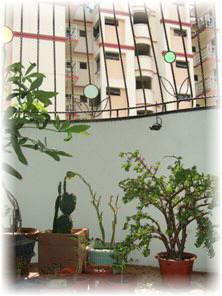honey in singapore
Status of Honey in Singapore
My observation of the status of honey in Singapore:
Here in Singapore (where I live – a tiny, modern, prosperous island-city-state in Southeastern Asia, located at the tip of the Malaysian Peninsula), most people know very little about honey and its benefits. Honey is used mostly in marinating barbeque meats and mixing with water to make throat-soothing or thirst quenching icy honey drink, a popular drink in our hot climate that is supposed to reduce “heatiness in the body”. Occasionally, it’s also eaten as a sauce for breakfast pancakes and added as a sweetener to herbal teas and fruit juices.

Not many know much about the goodness of honey in Singapore, its relevance to the health of women, elderly, and children, or are aware how it can be used in their diet or cooking. Applying honey on toast or bread like what the Westerners do is somewhat strange and bizarre for most locals. And how foreigners spoon honey straight from the jar and drizzle it over fruit, pancakes, and waffles, how they use honey as a natural sweetener in place of sugar in hot drinks and desserts such as puddings are all not common knowledge and practices here.
The average household knows honey costs much more than table sugar but has no clue know how much more extra value they could gain if they and their families eat honey instead of table sugar.
General interest and knowledge level of honey in Singapore is low. I believe many people here don’t know how honey is actually produced. Yes, from the honey bees, but that’s about all they know, nothing more. Many are clueless about the different floral varieties of honey and have no idea how they can be ingeniously and creatively used in cooking. People’s impression of honey in Singapore is pretty standard — basically sweet and nothing more. I can understand why. Most people here are only familiar with the mass produced honey on supermarket shelves, a homogenous blend that makes each jar look the same and have the same mild, unexciting mainstream flavor.

Many don’t know that there is so much more to honey, that honey from each bee colony is really a snapshot of that landscape, the flowers and crop that flourish there, and that time period. They don’t know how much they are missing out there when it comes to honey and its varying flavour, profiles and facades. Attitudes towards light and dark honey are probably like decades ago where people saw all wine as basically either red or white.
Also, it seems to me that people here don’t really know what honey to look for – which brand, and know what is considered as good quality honey. Some of the youngsters perhaps will at most consider and grab and enjoy a honey stick from the store but do not know anything about its nutrition value. There is not a single honey bee farm or beekeeping activity in Singapore, and needless to say, no local beekeeping associations where beekeepers share information with the public.
I do not know of any efforts to enlist honey manufacturers to promote and talk about the health and taste benefits of honey in Singapore. And never have I seen an in-store cooking demonstration using honey or know of honey tasting events. And teachers in the schools here do not really make any attempt to educate and explain to their kids in details how honey is produced. Children grow up innocently thinking that honey simply comes from the jars or bottles in the supermarkets or grocery stores. (This has propelled me to write a book for kids entitled Darling, Honey is Good for You!
My fascination with honey goes back to 2005-2006 when I stumbled upon the different types of honey products in the store. The benefits of honey such as Manuka UMF intrigued me a lot and drove me to find out more about the properties of honey and folk remedies related to honey. I was excited by the fact that now we could even find precious costly herbs and supplements such as Ginseng, and Tongkat Ali in bottles of honey for sale in the supermarket! Discovering and experiencing honey as an ingredient in cooking and baking also hooked me on. I was crazy about exotic honey recipes — Traditional Chinese Honey BBQ Pork Recipe, Oriental Honey Pickles Recipe, Famous Peking Duck Recipe, and Thai Honey Green Mango Salad Recipe. This is how and why benefits-of-honey website all began and set out to be – to elevate the level of knowledge about honey in Singapore and beyond and all its benefits, and to form a huge, active community of honey lovers who are excited to share with others their experience about the kinds of honey they have tasted and the health benefits they have seen in their lives.
As we see a stronger trend with natural remedies and foods and a revisit of the the ancient times when honey was used as a folk remedy for ailments such as cuts and scraps, laxative, and cough and sore-throat balm, among other things, and more recently in the Hibernation Diet, I hope to see that the general public here will show more curosity and interest in honey, both in the kitchen and outside of the kitchen.
Eating for health has never been sweeter.
Related Pages on Honey in Singapore
1) Bees in Singapore: Can We Have the Honey Bee Back, Please?
2) Beekeeping in Singapore: Start Beekeeping in Singapore
End of “Status of Honey in Singapore”. Back to “Taste of Honey Varieties — Color and Flavor”.